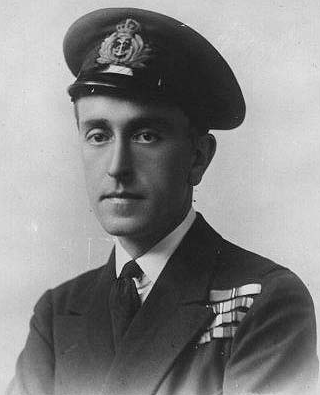by Scott Mehl © Unofficial Royalty 2017

Nadejda Mikhailovna de Torby, Marchioness of Milford Haven. source: Wikipedia
Countess Nadejda Mikhailovna de Torby was the wife of Prince George of Battenberg (later George Mountbatten, 2nd Marquess of Milford Haven). She was born in Cannes, France on March 28, 1896, the second daughter of Grand Duke Mikhail Mikhailovich of Russia, a grandson of Nicholas I, Emperor of All Russia, and Countess Sophie von Merenberg. As her parents’ marriage was morganatic, her father was stripped of his position at the Imperial Court and banished from Russia for the rest of his life. The morganatic marriage also meant that none of Mikhail’s styles or titles passed to his wife or their children. However, shortly after they married, Sophie’s uncle Adolphe, Grand Duke of Luxembourg created Sophie Countess de Torby, a title that also passed down to Nadejda and her two siblings:
- Anastasia Mikhailovna de Torby (1892 – 1977) – married Sir Harold Wernher, 3rd Baronet, had issue
- Michael Mikhailovich de Torby (1898 – 1959) – unmarried

Nadejda (left), with her brother, sister, and father. source: Wikipedia
By the time she was four years old, Nadejda’s family had settled in England but they also spent part of the year at their villa in Cannes, France. The family became prominent members of British society and developed friendships with several members of the British Royal Family. Through these friendships, Nadejda met her future husband, Prince George of Battenberg.

George was the eldest son of Prince Louis of Battenberg and Princess Victoria of Hesse and by Rhine (later the 1st Marquess and Marchioness of Milford Haven). Prince Louis’ siblings included Princess Andreas of Greece, Queen Louise of Sweden, and Earl Mountbatten of Burma. His mother was the daughter of Ludwig IV, Grand Duke of Hesse and by Rhine and Prince Alice of the United Kingdom, Queen Victoria’s second daughter. Nadejda and George married at the Russian Embassy in London on November 15, 1916. They settled at Lynden Manor in Bray, Berkshire, and had two children:
- Lady Tatiana Mountbatten (1917-1988) – unmarried
- David Mountbatten, 3rd Marquess of Milford Haven (1919-1970) – married (1) Romaine Pierce, no issue; (2) Janet Bryce, had issue
When King George V asked his German relatives to relinquish their German titles in 1917, Nadejda and her husband became simply Mr. and Mrs. George Mountbatten. Several months later, when George’s father was created Marquess of Milford Haven, George assumed his father’s subsidiary title, Earl of Medina. It would only be another 4 years when George’s father died, and he and Nadejda became the 2nd Marquess and Marchioness of Milford Haven. In later years, Nadejda and her husband helped to raise George’s nephew, Prince Philippos of Greece , later The Duke of Edinburg, the husband of Queen Elizabeth II of the United Kingdom.
1934 saw Nadejda drawn into the international spotlight during the contentious custody trial of Gloria Vanderbilt. Nadejda was a close friend of the child’s mother Gloria Morgan Vanderbilt and became part of the story when a former maid of Mrs. Vanderbilt suggested during testimony that her employer and the Marchioness were lovers. After publicly denouncing the allegations as “malicious, terrible lies”, Nadejda considered traveling to New York to testify on her friend’s behalf but was talked out of making the trip by King George V and Queen Mary.
However, one relative who did travel to testify in Mrs. Vanderbilt’s defense was Gottfried, Prince of Hohenlohe-Langenburg, who was married to Princess Margarita of Greece and Denmark, a niece of Nadejda’s husband. Gottfried had briefly been engaged to Mrs. Vanderbilt in the late 1920s and was called to testify on her behalf after scandalous allegations were made in court testimony about their prior relationship.
And here’s another interesting tidbit of information relating to Mrs. Vanderbilt. Her twin sister, Thelma, Viscountess Furness, was the mistress of The Prince of Wales (later King Edward VIII / Duke of Windsor) in the early 1930s. It was Thelma who introduced the Prince to her good friend, Wallis Simpson. The rest, as they say, is history!
Four years later, Nadejda was widowed when her husband succumbed to bone marrow cancer in 1938. Nada was very close to her sister-in-law, Edwina, and the two often traveled together.

Nada (center) with her son David and his fiancée, Romaine Pierce Simpson, photographed in October 1949. source: Zimbio
The Dowager Marchioness of Milford Haven died in Cannes, France on January 22, 1963. She is buried beside her husband in the Bray Cemetery in Bray, Berkshire, England.
This article is the intellectual property of Unofficial Royalty and is NOT TO BE COPIED, EDITED, OR POSTED IN ANY FORM ON ANOTHER WEBSITE under any circumstances. It is permissible to use a link that directs to Unofficial Royalty.





























